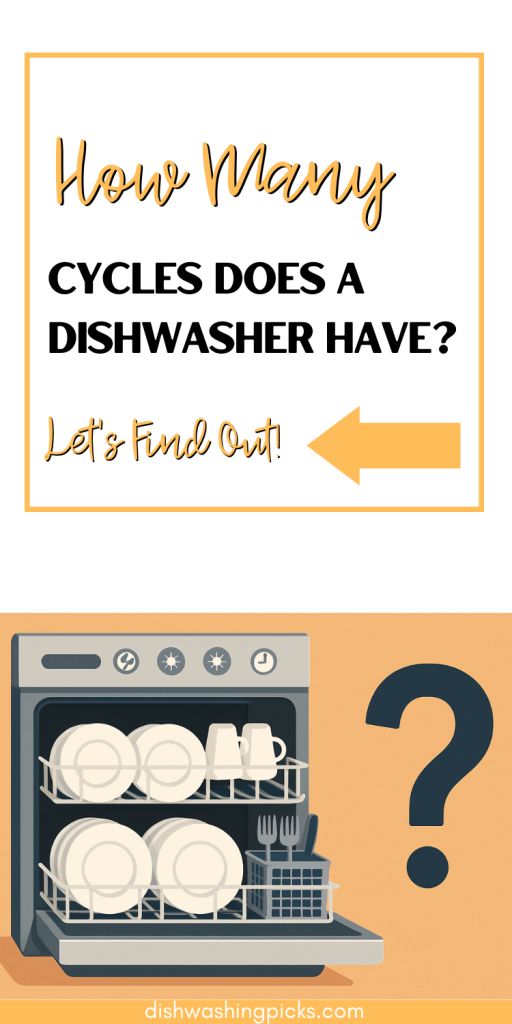
Alright, let’s be honest for a sec—most of us hit the same dishwasher button every single time and hope for the best. Right? Maybe it’s “Normal,” maybe it’s “Auto,” maybe you just mash whatever’s lit up and call it a day. But have you ever stopped and thought, “Wait… how many cycles does this thing actually have?”
Yeah. Same.
So let’s break it down, no confusing jargon, no user manual talk. Just you, me, and the mysterious world of dishwasher cycles.
Wait… What’s a Dishwasher Cycle, Anyway?
Good place to start. A cycle is basically the “playlist” your dishwasher runs to clean your stuff. Different playlists for different vibes. Got crusty lasagna stuck to a casserole dish? That’s a whole different mood than rinsing a few wine glasses, ya know?
Each cycle controls how long the machine runs, how hot the water gets, and how hard it scrubs.
So How Many Are We Talking?
Now here’s the thing—it varies by dishwasher brand and model. Some basic ones have like 3 or 4. Fancy ones? You could be looking at 8 or more! But let’s go over the usual suspects you’ll probably find:
1. Normal Cycle
Ah yes, the default. This is the go-to for your everyday mess—not too greasy, not too light. Just regular plates, cups, and maybe a pot or two. It’s like the chill friend who never overreacts.
2. Heavy Duty / Pots & Pans
This one’s for the aftermath of a cooking marathon. Think baked-on mac and cheese, greasy skillets, or stuff you left “soaking” for two days (no judgment). This cycle goes hotter and longer. It means business.
3. Quick Wash / Express
Running late? Got people coming over? This one’s your MVP. It gets through a load in like 30–60 minutes. Just don’t expect miracles—better for light messes and not so much dried oatmeal.
4. Eco / Energy Saver
If you’re trying to be kind to your utility bill—or the planet—this one’s for you. It uses less water and energy, but it might take longer. Weird, right? Slower = greener. Go figure.
5. Auto / Smart / Sensor Wash
Ooooh, fancy. This cycle thinks for you. It detects how dirty the dishes are and adjusts itself. Basically, it’s your dishwasher saying “I got this.”
6. Rinse Only
Okay, this isn’t really a “cleaning” cycle. It just rinses off the gunk so it doesn’t dry into a crusty mess before you run a full wash. Useful when you’re not ready to run a full load yet.
7. Delicate / Glass
Got wine glasses, fine china, or stuff you’re scared to break? This one’s gentle. Like, spa day for your dishes.
8. Sanitize
Germaphobes, this is your moment. This cycle adds extra hot water to kill bacteria—great if you’ve been sick or you’re cleaning baby bottles.
But… Do You Need to Use All of Them?
Honestly? Nah. Most people use 2 or 3 on the regular. But knowing your options can be super helpful. Like, if you keep wondering why your dishwasher’s not getting your pans clean—maybe you’re just using the wrong cycle.
Try thinking of it like this: You wouldn’t wear flip-flops to hike a mountain, right? Same logic. Pick the cycle that fits the job.
TL;DR: What You Really Need to Know
- Most dishwashers have between 4–8 cycles.
- Each cycle does different things: speed, heat, water usage, and intensity.
- “Normal,” “Heavy,” and “Quick” are the most commonly used.
- But the others? They’re not just fluff—they serve a purpose too.
So next time you’re about to hit that same ol’ button again, pause for a sec. Peek at the other cycles. Your dishwasher might be way more capable than you think.
And hey—if you’re still not sure? Run a test. Try something new. Your plates won’t mind being guinea pigs. 😉
